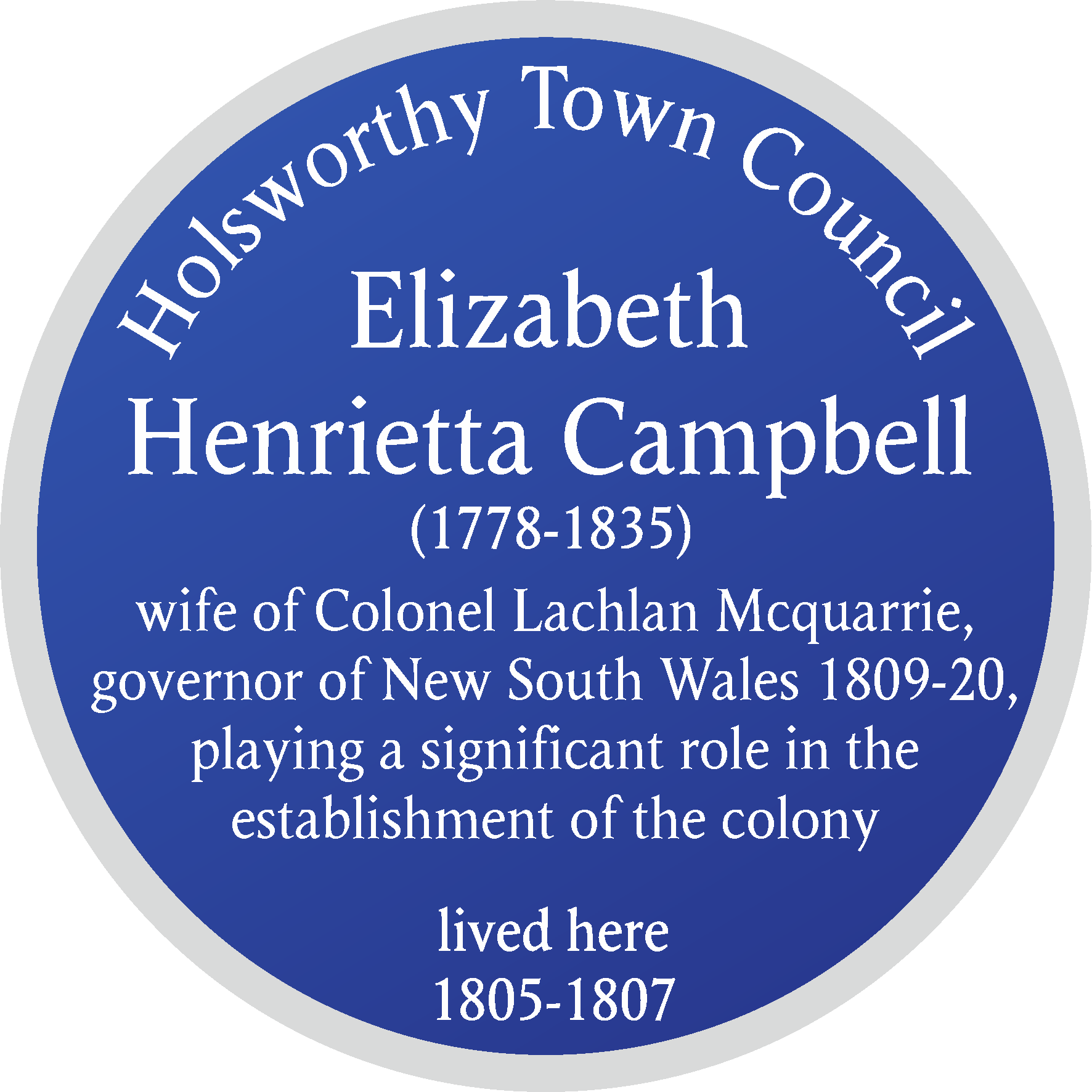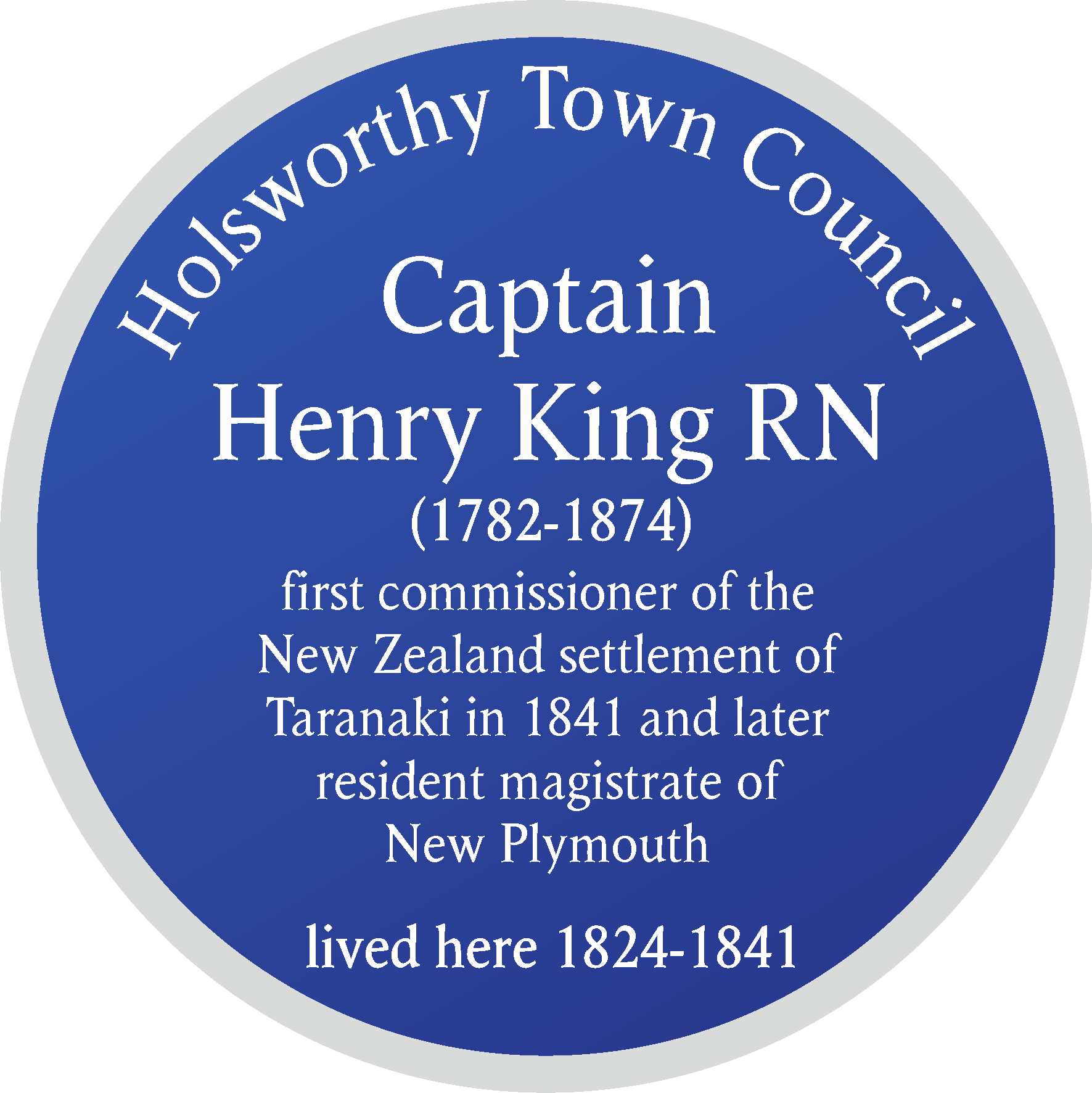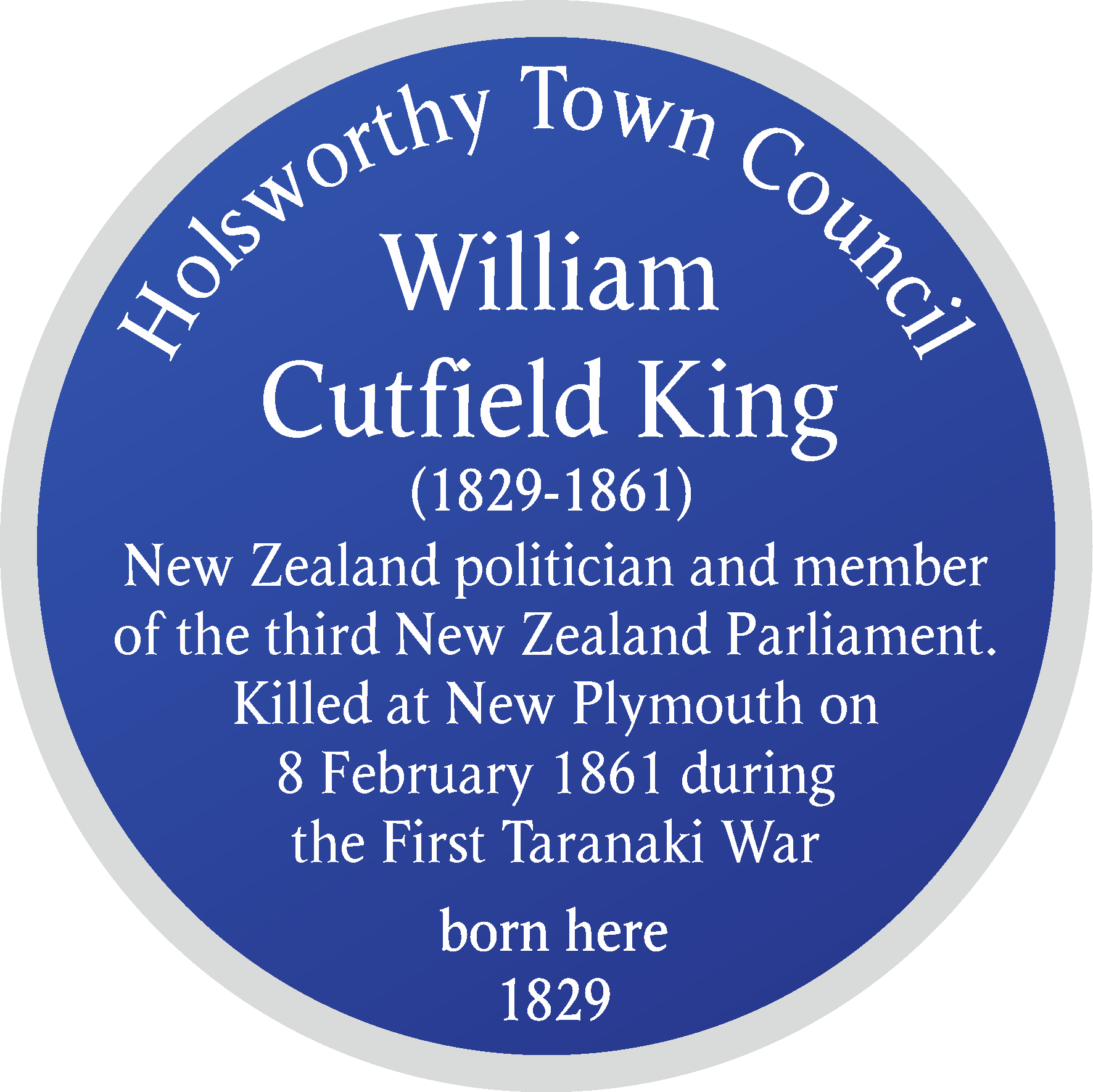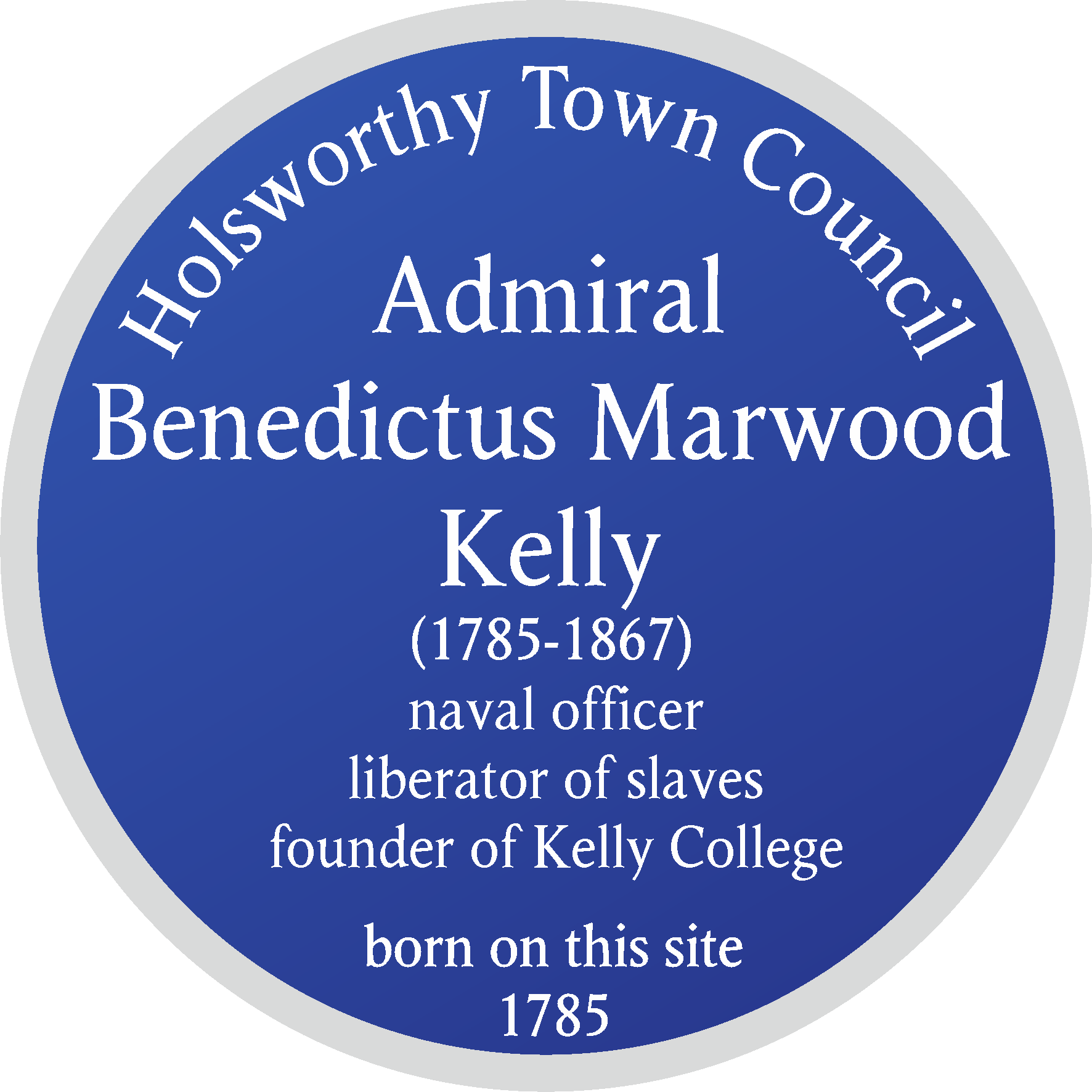The Cup Overfloweth
Holsworthy's Blue Plaque Contenders
Conducting a group of visitors around the town recently, I had stopped outside Bodmeyrick, and what is Holsworthy’s only Blue Plaque - to the memory of Doctor Stuart Craddock, pioneer in the discovery of penicillin – when one of the party remarked that, apart from thenoted doctor, he believed that the town was something of an empty pot when it came to former distinguished residents. I was, of course, given no option but to counter the statement and enlighten the group about some of Holsworthy’s famous sons and daughters and, although Holsworthy has perhaps been a little lacking in producing its own great figures of history, the town has been home to many worthies, some of whom are deserving of their own Blue Plaque.
 Some hundred and thirty years prior to Dr Craddock taking up residence at Bodmeyrick it had, in 1806, been the home of 27-year-old Miss Elizabeth Henrietta Campbell –from Airds, Scotland – governess to the children of the Rector, Owen Lewis Meyrick. Marrying fellow Scot, Lachlan Macquarie, in the parish church here on 3 November 1807, the names of Elizabeth Campbell and Lachlan Macquarie mean little to the people of the UK, and yet in Australia the couple are revered. Appointed governor of New South Wales in 1809, taking over from the unpopular Captain Bligh, together Lachlan and Elizabeth reformed what was still a penal colony into a thriving country and today Lachlan is lauded as the “Father of Australia” – so, that's our first two contenders for Blue Plaques!
Some hundred and thirty years prior to Dr Craddock taking up residence at Bodmeyrick it had, in 1806, been the home of 27-year-old Miss Elizabeth Henrietta Campbell –from Airds, Scotland – governess to the children of the Rector, Owen Lewis Meyrick. Marrying fellow Scot, Lachlan Macquarie, in the parish church here on 3 November 1807, the names of Elizabeth Campbell and Lachlan Macquarie mean little to the people of the UK, and yet in Australia the couple are revered. Appointed governor of New South Wales in 1809, taking over from the unpopular Captain Bligh, together Lachlan and Elizabeth reformed what was still a penal colony into a thriving country and today Lachlan is lauded as the “Father of Australia” – so, that's our first two contenders for Blue Plaques!
 We have only to walk a few yards to discover our next two candidates, both of whom – father and son – once resided at Park Villa. Captain Henry King, RN, had arrived in Holsworthy on retiring from the Royal Navy in 1824, becoming a barge-master on the Bude-Holsworthy Canal, from which he made a healthy profit. In 1840 he was selected to become Commissioner of the New Plymouth Company, created to establish a European settlement in the vicinity of Taranaki, on New Zealand’s North Island. Amongst the pioneers who left these shores to begin a new life in New Zealand, (many of them from the Holsworthy area) Captain King is credited with becoming the settlement’s first Commissioner and later its first Magistrate, placing him in good standing for his own Blue Plaque.
We have only to walk a few yards to discover our next two candidates, both of whom – father and son – once resided at Park Villa. Captain Henry King, RN, had arrived in Holsworthy on retiring from the Royal Navy in 1824, becoming a barge-master on the Bude-Holsworthy Canal, from which he made a healthy profit. In 1840 he was selected to become Commissioner of the New Plymouth Company, created to establish a European settlement in the vicinity of Taranaki, on New Zealand’s North Island. Amongst the pioneers who left these shores to begin a new life in New Zealand, (many of them from the Holsworthy area) Captain King is credited with becoming the settlement’s first Commissioner and later its first Magistrate, placing him in good standing for his own Blue Plaque.
 As is Henry’s son, William Cutfield King - born at Park Villa in 1827, and baptised in Holsworthy in February 1828. With his formative years spent in and around the town, William can be classed as a true son of Holsworthy. Aged 12, he left with his parents to settle in New Zealand. 19 years later, on 27 November 1860, William stood for, and was successful in winning a seat in the Third New Zealand Parliament, though was never to take his seat - shot and killed on his homestead during the First Taranaki War on 8 February 1861
As is Henry’s son, William Cutfield King - born at Park Villa in 1827, and baptised in Holsworthy in February 1828. With his formative years spent in and around the town, William can be classed as a true son of Holsworthy. Aged 12, he left with his parents to settle in New Zealand. 19 years later, on 27 November 1860, William stood for, and was successful in winning a seat in the Third New Zealand Parliament, though was never to take his seat - shot and killed on his homestead during the First Taranaki War on 8 February 1861
The one-time resident of the house known as the Elms is our penultimate Blue Plaque Finalist. Once the home (and surgery) of Dr Andrew William Palethorpe-Todd, General Practitioner, and Irish International rugby player (gaining three caps for his country). It is his son however, who is the Blue Plaque nominee – Richard Andrew Palethorpe-Todd, more widely known as the stage and film actor, Richard Todd, who arrived in Holsworthy, from India, at the age of five and spent his early years here, attending the National School, and watching his first moving pictures here in the Market Hall – little did those sitting next to him imagine that one day he would be the one appearing on screen
 Finally we come to our last contender – the illustriously named Admiral Benedictus Marwood Kelly, who was born on the site of Lloyds Bank, where once there stood a large gentleman’s residence - home of Lawyer and Holsworthy’s last private banker, Benedictus Marwood Kelly (senior) – a descendant of the distinguished and ancient Kelly Family of Kelly House, Kelly, Devon. Born in 1785, Benedictus (junior) entered the Royal Navy in 1798, aged just 13, and through the supervision and guidance of his uncle, Captain William H Kelly, rose through the ranks, becoming an Admiral in 1863 after active service in the French Revolutionary and Napoleonic Wars and, notably, in the anti-slavery patrols off the coast of Africa, during which time, aboard HMS Pheasant, he acted as Senior Officer of the West Africa Squadron. Retiring from active service on the grounds of ill health in 1822, Benedictus pursued a successful career in the city of London. Retiring to Saltford House, lying between the cities of Bath and Bristol, Admiral Kelly died, aged 82, on 26 September 1867, and was buried at the parish church of the village of Kelly, near Lifton. Leaving no children, he bequeathed over £80,000 for the establishment of Kelly College, Tavistock – opened in 1877 as a boarding school for “the sons of Naval Officers and other gentlemen”
Finally we come to our last contender – the illustriously named Admiral Benedictus Marwood Kelly, who was born on the site of Lloyds Bank, where once there stood a large gentleman’s residence - home of Lawyer and Holsworthy’s last private banker, Benedictus Marwood Kelly (senior) – a descendant of the distinguished and ancient Kelly Family of Kelly House, Kelly, Devon. Born in 1785, Benedictus (junior) entered the Royal Navy in 1798, aged just 13, and through the supervision and guidance of his uncle, Captain William H Kelly, rose through the ranks, becoming an Admiral in 1863 after active service in the French Revolutionary and Napoleonic Wars and, notably, in the anti-slavery patrols off the coast of Africa, during which time, aboard HMS Pheasant, he acted as Senior Officer of the West Africa Squadron. Retiring from active service on the grounds of ill health in 1822, Benedictus pursued a successful career in the city of London. Retiring to Saltford House, lying between the cities of Bath and Bristol, Admiral Kelly died, aged 82, on 26 September 1867, and was buried at the parish church of the village of Kelly, near Lifton. Leaving no children, he bequeathed over £80,000 for the establishment of Kelly College, Tavistock – opened in 1877 as a boarding school for “the sons of Naval Officers and other gentlemen”
I’ll let you decide who you think should be the winner of the Blue Plaque Award – I think they’re all admirable winners and all worthy of having their own Blue Plaque! There are others, of course, but I think it’s quite clear to see that the pot’s not looking so empty now, is it!
HOLSWORTHY MUSEUM IS MANAGED AND RUN ENTIRELY BY VOLUNTEERS
© Copyright Holsworthy Museum
